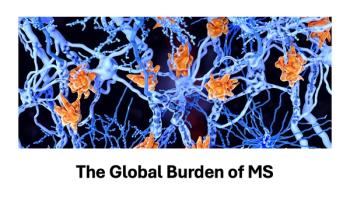
Children With Asthma Experience Improved Lung Function With Dupixent Initiation
Two posters presented at the European Respiratory Society International Congress found use of Dupixent improved lung function by 12 weeks with sustained responses.
In pediatric patients aged 11 years and younger, use of Dupixent (dupilumab) improved lung function as soon as 12 weeks after initiation with responses sustained for up to 2 years of treatment. The findings were presented in two posters at the European Respiratory Society International Congress, held September 9 to 13 in Milan, Italy.
Improving lung function is key to managing pediatric asthma. Impaired lung function is a risk factor for abnormal lung growth and chronic obstructive pulmonary disease in adulthood, the authors of one study explained. They presented the results of the LIBERTY ASTHMA VOYAGE study, which analyzed Dupixent’s efficacy in improving lung function in patients with type 2 asthma, defined as a blood eosinophil count ≥ 150 cells/µL or fractional exhaled nitric oxide (FeNO) ≥ 20 parts per billion.
Dupixent is a fully human monoclonal antibody that blocks interleukin (IL)-4 and IL-13, which are key drivers of type 2 inflammation in asthma.
This study was a 52-week, randomized, double-blind, phase 3 trial enrolling patients 6 to 11 years old with uncontrolled, moderate-to-severe asthma. The patients were randomized to receive add-on Dupixent every 2 weeks or placebo.
By Week 12, 59.7% of patients on Dupixent compared with 50.0% on placebo achieved a 5 % or greater improvement in pre-bronchodilator percent predicted forced expiratory volume in 1 second (ppFEV1). By Week 12, 44.9% of patients on Dupixent compared with 31.6% on placebo had a 10% or greater improvement.
The annualized severe exacerbation rate was reduced in patients on Dupixent versus placebo 60% for those with a 5% or greater improvement in pre-bronchodilator ppFEV1 and by 59% for those with a 10% or greater pre-bronchodilator ppFEV1.
Compared with placebo, patients on Dupixent who met the ppFEV1 responder criteria by Week 12 had significantly reduced severe exacerbation rates and significantly improved pre-bronchodilator ppFEV1 over 52 weeks.
In the second poster, the researchers analyzed the open-label, single-arm extension LIBERTY ASTHMA EXCUSION study, which included patients previously in the LIBERTY ASTHMA VOYAGE study. EXCURSION assessed long-term safety and efficacy for an additional 52 weeks after the end of VOYAGE. The post hoc analysis continued to assess improvements in lung function for participants.
All of the participants in EXCURSION received Dupixent for the full 52 weeks, and the study evaluated change from the parent study baseline in pre-bronchodilator ppFEV1. There were 106 patients who had switched from placebo in the parent study to Dupixent in EXCURSION (placebo/Dupixent) and 209 patients who had been on Dupixent in the parent study and remained on it in EXCURSION (Dupixent/Dupixent). The change from baseline to Week 52 in pre-bronchodilator ppFEV1 in the Dupixent/Dupixent arm versus the placebo/Dupixent arm was greater.
The patients on Dupixent in VOYAGE experienced a rapid improvement in lung function that was sustained throughout EXCURSION, explained poster presenter Leonard B. Bacharier, MD, of Monroe Carell Jr Children’s Hospital at Vanderbilt University Medical Center. Patients initially on placebo also experienced a rapid improvement in lung function when they switched to Dupixent upon entering EXCURSION. This improvement was also sustained throughout the 52 weeks of the post hoc analysis.
The study also stratified results by baseline characteristics, which showed that lung function response was not significantly impacted by which treatment patients received during the parent study or by baseline characteristics.
“In conclusion, dupilumab improved, and sustained, pre-bronchodilator percent predicted FEV1 up to 104 weeks regardless of time since diagnosis, age at asthma onset, age group, inhaled corticosteroid dose or asthma control at parent study baseline,” Bacharier said.
Newsletter
Get the latest industry news, event updates, and more from Managed healthcare Executive.






















































